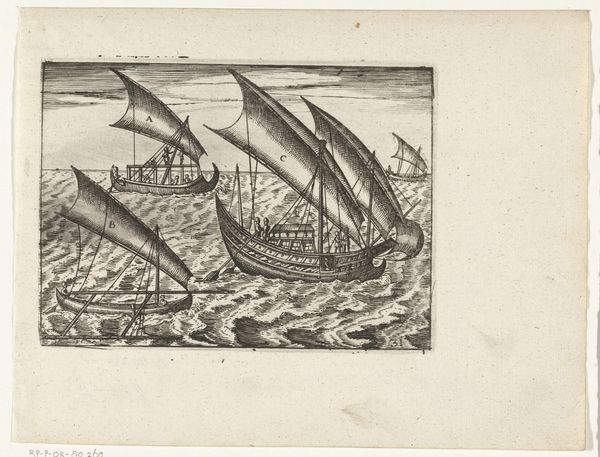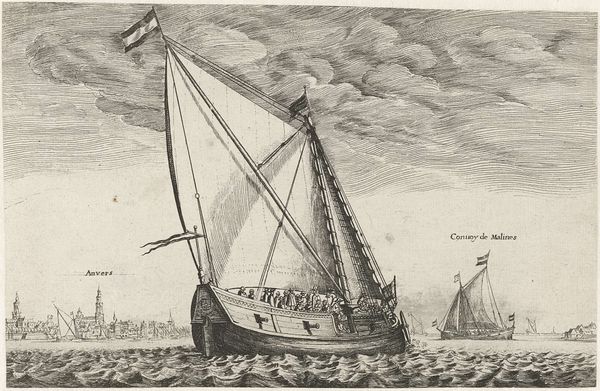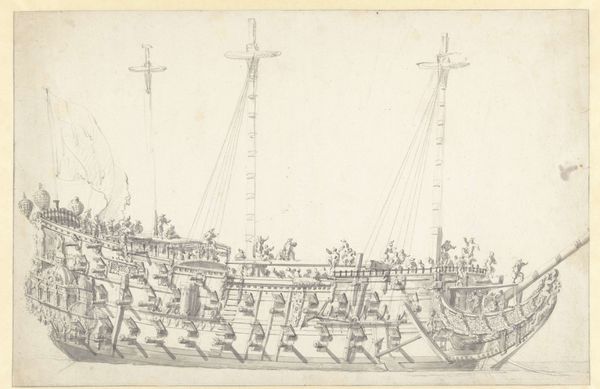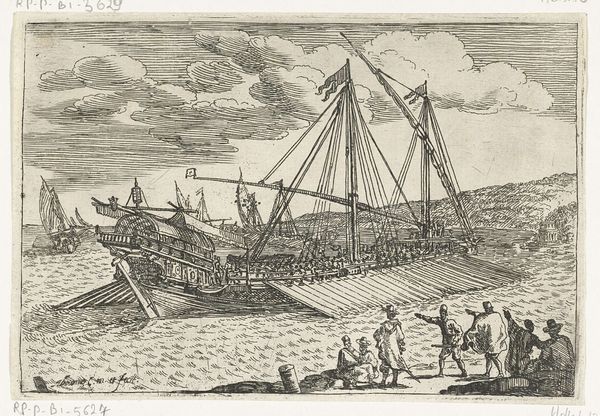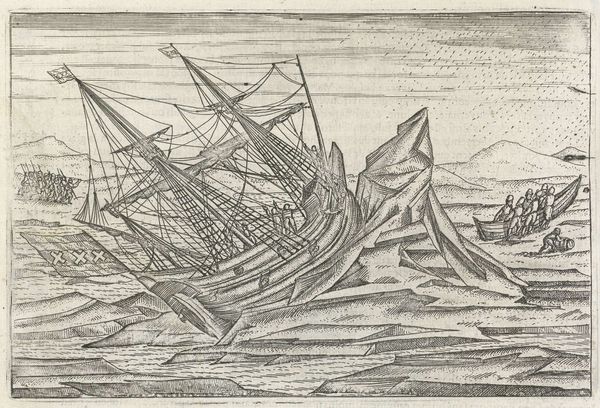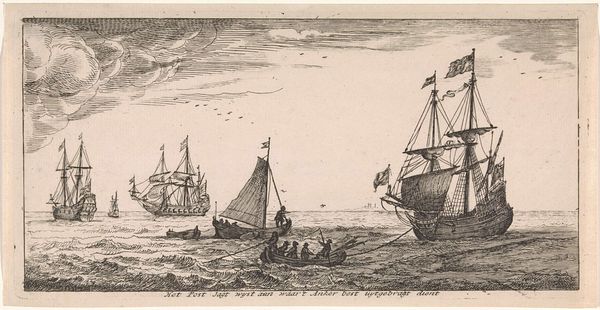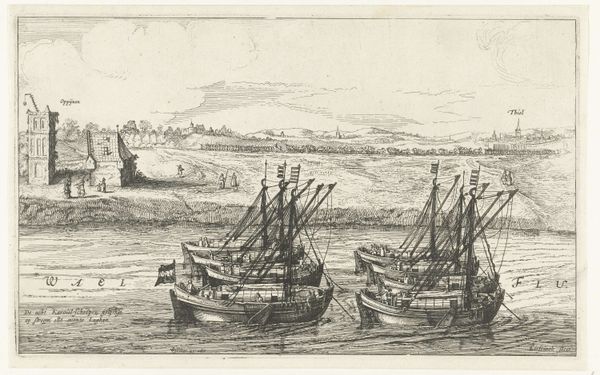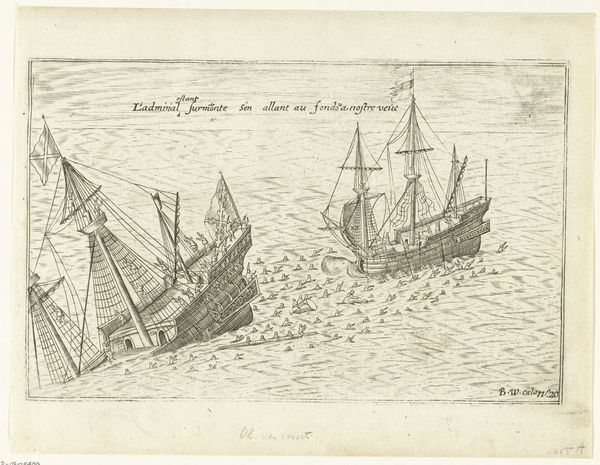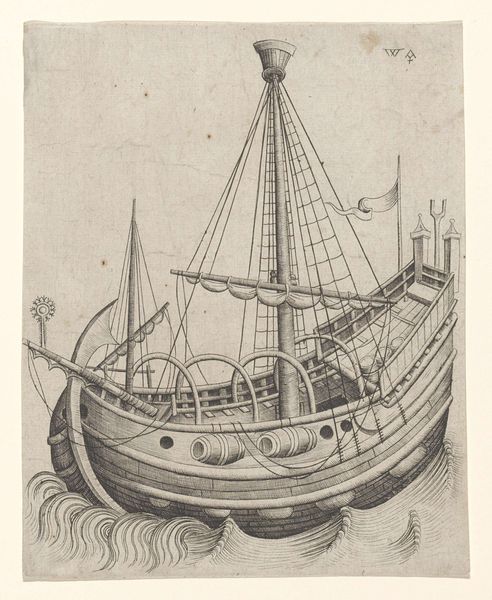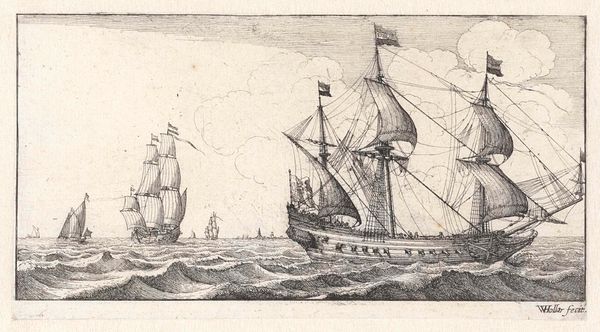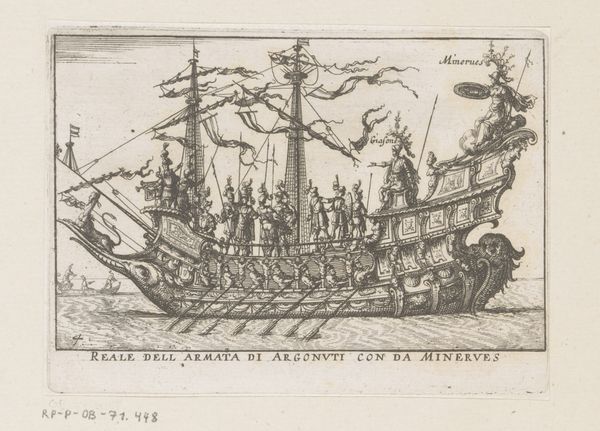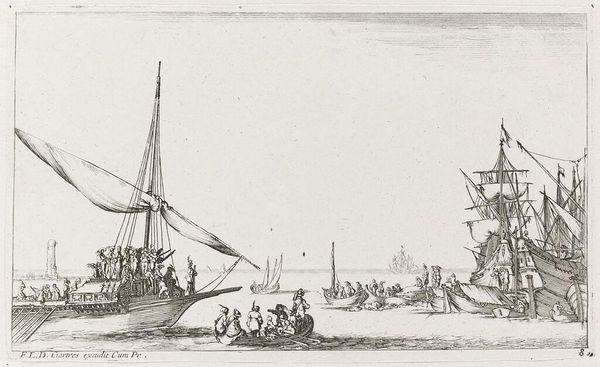
print, engraving
#
baroque
# print
#
landscape
#
genre-painting
#
history-painting
#
engraving
Dimensions: height 145 mm, width 220 mm
Copyright: Rijks Museum: Open Domain
Curator: Let’s discuss this engaging print, held here at the Rijksmuseum, titled "Javaans schip te Bantam, 1596," which translates to "Javanese Ship at Bantam, 1596.” Though attributed to an anonymous artist, the piece is estimated to have been created sometime between 1597 and 1646. Editor: It’s immediately striking – that linear detail! The crispness of the lines almost makes it feel like I could reach out and touch the wood grain of those boats. And all the oars, clearly, it speaks to human effort. Curator: Exactly. Its creation likely coincides with increased European maritime activity in Southeast Asia, making this artwork a lens into the cultural exchange and colonial expansion of the period. Note the visual depiction of the Javanese ship – likely made for a European audience – which shaped perceptions of naval capabilities and trade. Editor: That's what I find fascinating. What kind of labor went into this image itself? I see the repetitive nature of the engravings, the tiny marks, each one requiring careful execution. It gives a tangible sense of production – both of the image, and of the ships themselves. How were such vessels even constructed? Curator: Consider too the political context. Prints like this served to inform and persuade, demonstrating naval power and promoting specific narratives regarding Dutch trade and encounters with local populations in places like Bantam. What is represented, how it is represented, and its purpose within political and societal dynamics of the time, reveal a complex tapestry. Editor: It also prompts me to question assumptions about 'high' art versus craft. We're viewing an engraving, a process inherently tied to reproduction and distribution, made for a specific purpose. How does that impact its perceived value, its accessibility? The paper used as a commodity. Curator: That’s well-put. Furthermore, this print’s survival and current place within a museum like the Rijksmuseum actively shapes its cultural value today. Consider how the institution impacts not just accessibility but understanding as well. Editor: Definitely food for thought! Looking closely at it, I see labor at every level, from the sailors rowing to the anonymous artist painstakingly recreating the scene with sharp lines. Thanks to it, we get a little glimpse into a moment long past. Curator: I agree. This print showcases the value of considering the social forces at play, especially during periods of intense exchange. A great reflection of how institutions influence the visual record.
Comments
No comments
Be the first to comment and join the conversation on the ultimate creative platform.
